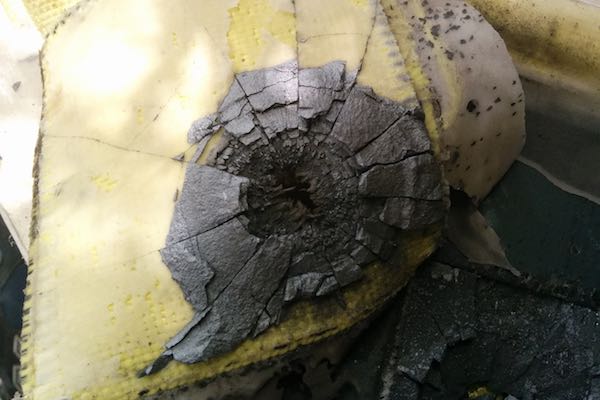
The August 2017 issue of the ACerS Bulletin is now available online.
Packed with exciting content, the new issue starts out with a big announcement—turn to page 3 for a special message from the leaders of ACerS, AIST, and TMS about the annual Materials Science & Technology (MS&T) meeting and exhibition.
The August issue features an excellent cover story that explores the interrelationship of processing, microstructure, and mechanical properties of reaction-bonded boron carbide. Author Shmuel Hayun writes about how—with adequate understanding of processing parameters and resulting material properties—reaction bonding can offer a relatively inexpensive alternative fabrication method for lightweight ceramic armor.
Boron carbide keeps the focus in a second feature article written by authors Atta U. Khan, Vladislav Domnich, and Richard A. Haber. Their article provides a critical assessment of recent advances in understanding of the nature and possible root causes of shear-induced amorphization in boron carbide for lightweight armor applications.
Plus, the new issue includes our annual raw materials report, detailing salient statistics from the USGS annual Mineral Commodities Summaries 2017. In addition to an overview of the annual report, we pull out trends for materials that are integral to the ceramic and glass industries. Turn to the infographic on page 28 for your at-a-glance overview of countries that are leading producers of select mineral commodities.
In another feature article in the August Bulletin, Wolfgang Rossner, retired research manager of corporate technology at Siemens AG, provides us with a glimpse into the future of high-performance ceramics in Germany. The article offers a detailed update on five core application fields in ceramic R&D activities that have been prioritized by a collaboration of German academic, governmental, and industrial ceramics experts.
Plus, the new issue also includes an interesting article that hones in on where “big data” meets materials science. Capitalizing on the relatively new promise of “big data” will require materials scientists who are trained in data informatics—and authors Elizabeth Dickey and Greer Arthur detail how several universities are answering the call.
There’s lots more good stuff inside this—and every issue—of the ACerS Bulletin. The current issue is free to all for a short time, but remember that all the valuable content in over ninety years of past issues of the ACerS Bulletin is free only to members—so considering joining us today!

